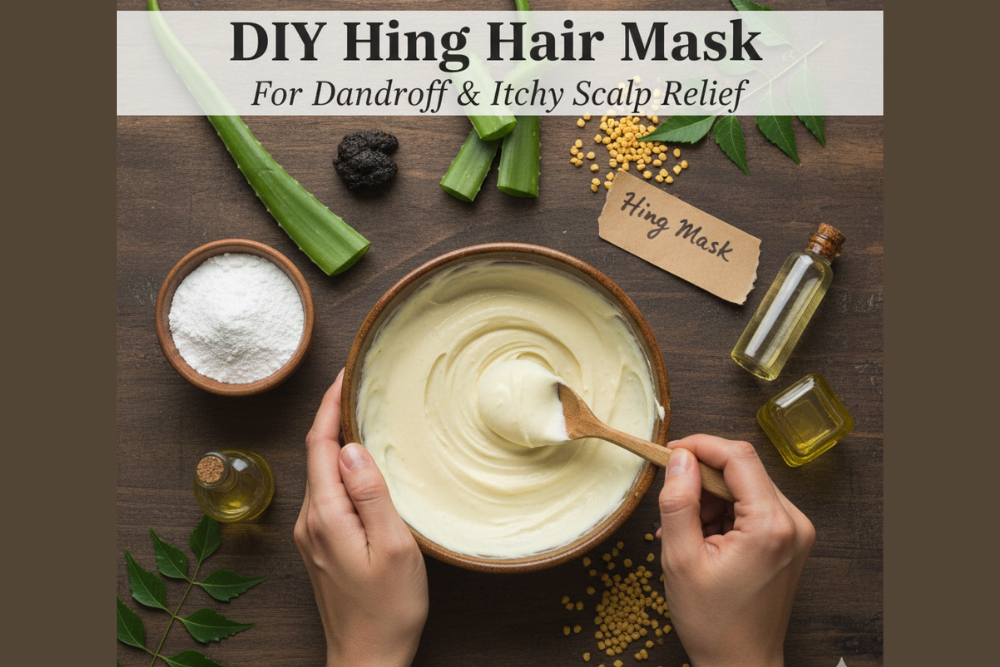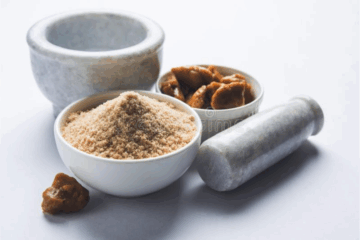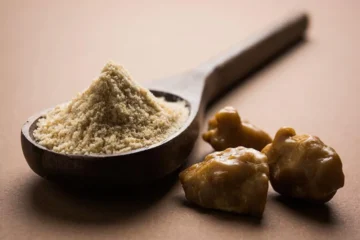Looking for a natural way to get rid of dandruff and soothe an itchy scalp? A Hing Hair Mask for Dandruff is an ancient Ayurvedic solution that helps fight flakes, irritation, and scalp infection — all while nourishing your hair naturally.
How does hing help with dandruff and scalp itchiness?
Short Answer: Hing (asafoetida) helps relieve dandruff and scalp itchiness due to its antifungal, antibacterial, and anti-inflammatory properties. It balances scalp pH and soothes irritation caused by fungal growth and excess sebum.
Long Answer:
- Antifungal Power: Hing contains bioactive compounds that combat Malassezia, the fungus responsible for dandruff, effectively reducing scalp flakiness.
- Anti-inflammatory Relief: It calms redness and inflammation, offering instant comfort for itchy scalps.
- Ayurvedic Balance: According to Ayurveda, hing balances the scalp’s natural pH, which helps regulate oil secretion and prevents fungal overgrowth.
- Improved Blood Circulation: Hing improves scalp blood flow, promoting healthier hair follicles and stronger roots.
- Natural Detox: Regular use removes toxins and buildup, maintaining a clean and healthy scalp environment.
These combined effects make hing an effective Ayurvedic hair mask ingredient for dandruff and itchy scalp relief.
What’s the best way to make a hing hair mask at home?
Short Answer: Mix hing powder with yogurt and neem paste or aloe vera gel for a soothing and effective DIY Hing Hair Mask that reduces dandruff, calms itchiness, and hydrates your scalp naturally.
Long Answer:
- Ingredients You’ll Need:
| Ingredient | Quantity | Purpose |
|---|---|---|
| Hing (asafoetida) powder | 1 teaspoon | Fights dandruff-causing fungus |
| Yogurt | 2 tablespoons | Moisturizes and cools the scalp |
| Neem paste or Aloe Vera gel | 1 tablespoon | Antibacterial and soothing action |
| Coconut oil (optional) | 1 teaspoon | Deeply conditions dry scalp |
- How to Prepare: Mix all the ingredients in a non-metallic bowl until smooth.
- Application: Apply evenly to your scalp using your fingertips or a brush. Leave it for 20–25 minutes.
- Rinse Off: Wash with a mild herbal shampoo and let your hair dry naturally.
- Pro Tip: Add a few drops of tea tree or rosemary oil for enhanced antifungal benefits.
This homemade hing hair treatment provides visible relief from dandruff and scalp irritation with regular use.
How often should I use a hing hair mask?
Short Answer: Use a hing hair mask for dandruff once a week for mild dandruff. Results are often visible after 2–3 uses, while consistent use over 3–4 weeks ensures long-lasting relief.
Long Answer:
- Initial Results: Relief from itching and dryness can appear after the second or third application.
- Frequency: For mild dandruff, apply once a week. For severe dandruff, use twice weekly until symptoms ease.
- Consistency is Key: Regular use over 3–4 weeks balances scalp oil production and maintains long-term cleanliness.
- Post-Use Care: Always follow up with mild herbal shampoo to retain natural oils.
- Long-Term Maintenance: Once the dandruff subsides, reduce usage to once every two weeks for prevention.
With time, your scalp will stay flake-free, and hair will appear softer, shinier, and healthier.
Is a hing hair mask safe for sensitive scalps?
Short Answer: Yes, it’s safe when diluted properly. However, hing powder for scalp health is strong, so sensitive users should always perform a patch test and mix it with soothing bases like yogurt, aloe vera, or coconut milk.
Long Answer:
- Patch Test: Apply a small amount behind your ear or on your wrist for 15 minutes. If no irritation occurs, it’s safe to use.
- Always Dilute: Hing should never be used alone. Mix it with hydrating agents like aloe vera, yogurt, or coconut milk to minimize any burning sensation.
- Avoid Sensitive Areas: Keep away from eyes and open wounds.
- Redness or Tingling: A mild tingling is normal, but if redness persists, rinse immediately.
- Gentle Alternatives: Use less hing and more yogurt for mild cases or sensitive skin types.
With these precautions, asafoetida for scalp care can safely help relieve dandruff and itchiness without side effects.
Can I combine hing with other Ayurvedic herbs like fenugreek or tulsi?
Short Answer: Yes, combining hing with Ayurvedic herbs like fenugreek, tulsi, or bhringraj enhances dandruff-fighting power while improving scalp hydration and hair strength.
Long Answer:
- Fenugreek (Methi): Moisturizes dry scalps, reduces flakiness, and boosts shine.
- Tulsi (Holy Basil): Adds antifungal and cooling properties, reducing scalp irritation.
- Bhringraj: Strengthens hair roots and supports natural hair growth.
- Neem: Acts as a natural disinfectant and balances scalp oil.
- How to Mix: Combine 1 teaspoon each of hing and herb powder with 2 tablespoons yogurt for an all-in-one Ayurvedic treatment.
This herbal blend is an excellent natural remedy for dandruff and itchy scalp, offering holistic healing for all scalp types.
Conclusion
The DIY Hing Hair Mask for Dandruff and Itchy Scalp Relief is a powerful Ayurvedic solution for common scalp issues. With antifungal and anti-inflammatory properties, hing helps combat dandruff, balances scalp oil, and soothes itchiness. Whether combined with aloe vera, neem, or tulsi, it offers an effective and affordable natural remedy for dandruff and itchy scalp.
Try this easy homemade hing hair treatment once a week and experience healthier, flake-free hair the natural way — because sometimes, the best beauty care starts in your kitchen!





